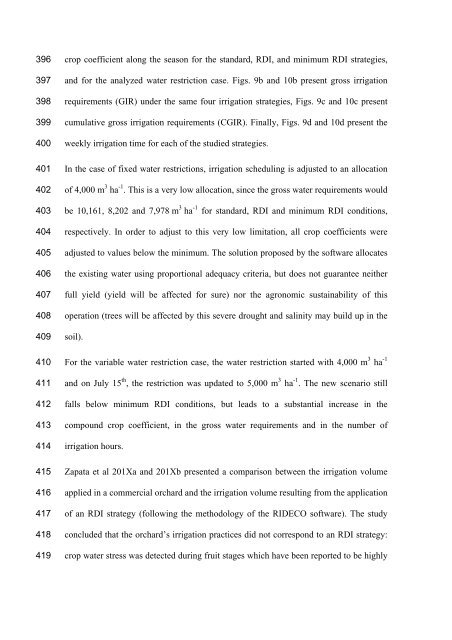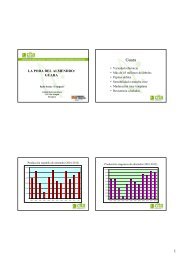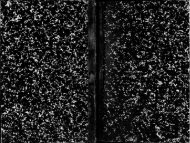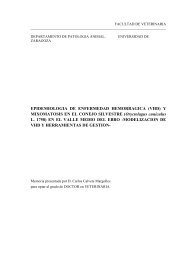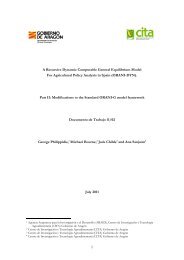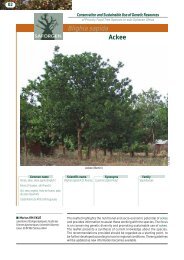SOFTWARE FOR ON-FARM IRRIGATION SCHEDULING ... - citaREA
SOFTWARE FOR ON-FARM IRRIGATION SCHEDULING ... - citaREA
SOFTWARE FOR ON-FARM IRRIGATION SCHEDULING ... - citaREA
You also want an ePaper? Increase the reach of your titles
YUMPU automatically turns print PDFs into web optimized ePapers that Google loves.
396<br />
397<br />
398<br />
399<br />
400<br />
401<br />
402<br />
403<br />
404<br />
405<br />
406<br />
407<br />
408<br />
409<br />
410<br />
411<br />
412<br />
413<br />
414<br />
415<br />
416<br />
417<br />
418<br />
419<br />
crop coefficient along the season for the standard, RDI, and minimum RDI strategies,<br />
and for the analyzed water restriction case. Figs. 9b and 10b present gross irrigation<br />
requirements (GIR) under the same four irrigation strategies, Figs. 9c and 10c present<br />
cumulative gross irrigation requirements (CGIR). Finally, Figs. 9d and 10d present the<br />
weekly irrigation time for each of the studied strategies.<br />
In the case of fixed water restrictions, irrigation scheduling is adjusted to an allocation<br />
of 4,000 m 3 ha -1 . This is a very low allocation, since the gross water requirements would<br />
be 10,161, 8,202 and 7,978 m 3 ha -1 for standard, RDI and minimum RDI conditions,<br />
respectively. In order to adjust to this very low limitation, all crop coefficients were<br />
adjusted to values below the minimum. The solution proposed by the software allocates<br />
the existing water using proportional adequacy criteria, but does not guarantee neither<br />
full yield (yield will be affected for sure) nor the agronomic sustainability of this<br />
operation (trees will be affected by this severe drought and salinity may build up in the<br />
soil).<br />
For the variable water restriction case, the water restriction started with 4,000 m 3 ha -1<br />
and on July 15 th , the restriction was updated to 5,000 m 3 ha -1 . The new scenario still<br />
falls below minimum RDI conditions, but leads to a substantial increase in the<br />
compound crop coefficient, in the gross water requirements and in the number of<br />
irrigation hours.<br />
Zapata et al 201Xa and 201Xb presented a comparison between the irrigation volume<br />
applied in a commercial orchard and the irrigation volume resulting from the application<br />
of an RDI strategy (following the methodology of the RIDECO software). The study<br />
concluded that the orchard’s irrigation practices did not correspond to an RDI strategy:<br />
crop water stress was detected during fruit stages which have been reported to be highly


